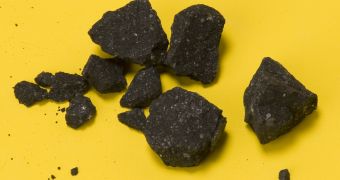Meteorites are relatively common on Earth and more fall down each year. They provide a rare opportunity for scientists to study conditions in outer space and the makeup of faraway objects. But the longer a meteorite spends on the surface of our planet, exposed to contaminants and the elements, the less valuable the data is.
Which is why researchers keep an eye out for meteors large enough to be tracked and to leave a trace once they land. One meteorite recovered earlier this year proved to be a "gold mine" for scientists, fitting, since it was found around Sutter's Mill in California, the place that started the gold rush.
Not only was this particular meteor the fastest ever recorded, it was also recovered very shortly after it crashed on our planet.
"The small three meter-sized asteroid that impacted over California’s Sierra Nevada came in at twice the speed of typical meteorite falls," meteor astronomer Peter Jenniskens of NASA Ames and the SETI Institute, the lead author of the paper describing the meteorite, said.
"Clocked at 64,000 miles per hour, it was the biggest impact over land since the impact of the four meter-sized asteroid 2008 TC3, four years ago over Sudan," he explained. The results of the study were published in the Science journal.
The meteorite entered our atmosphere at around 28.6 km/s, or 103,000 km/h, the highest speed ever tracked. It came at an unusually steep angle, due to its peculiar orbit around the sun, an orbit preferred by comets.
The asteroid is estimated to have weighed around 45 tons, or 100,000 pounds and was 2.5 to four meters, eight to 13 feet, in diameter.
It broke up as it entered the atmosphere, with an explosion the equivalent of four kilotons of TNT, about a quarter the energy of the Hiroshima bomb. The meteor broke up in countless fragments, only some 77 meteorites were recovered, the biggest weighing 205 grams.
As it fell, the meteor was tracked by three radar stations, meaning that scientists were quickly dispatched to recover it. It paid off as they were able to observe some substances that quickly alter on our planet, in contact with water.
In fact, samples recovered early differed quite a lot in chemical composition to ones recovered just two days later, after it had rained in the area.
The meteorite is a rare one, made up of a rock known as carbonaceous chondrite. It's estimated that the asteroid from which it originated was formed some 4.5 billion years ago, around the same time as our solar system in the asteroid belt between Mars and Jupiter.

 14 DAY TRIAL //
14 DAY TRIAL // 
